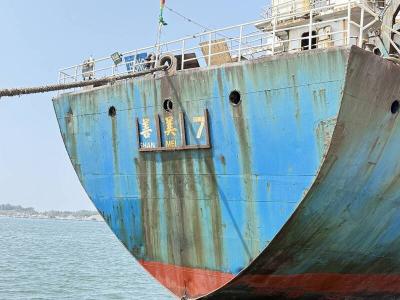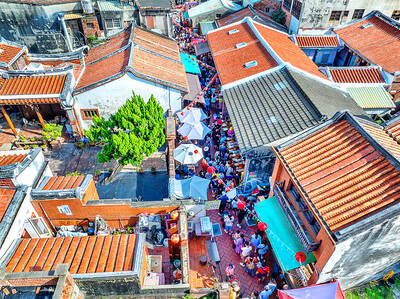Spending on research and development (R&D) made up almost 4 percent of Taiwan’s GDP last year, the highest proportion in the country’s history, National Science and Technology Council data showed.
R&D spending nationwide totaled NT$898 billion (US$27.8 billion) last year, accounting for 3.96 percent of Taiwan’s GDP, compared with 3.77 percent in 2021, the data showed.
R&D expenditure rose 9.4 percent from a year earlier, the council said, adding that spending in technology development totaled NT$654 billion, the largest portion of R&D spending, up 10.1 percent from a year earlier.
Fundamental research accounted for NT$68.5 billion of total R&D spending last year, up 12.1 percent from a year earlier, while about NT$175.4 billion went to applied research, a rise of 6 percent from a year earlier, it said.
The private sector spent NT$772.9 billion on R&D in the year, up 11 percent from a year earlier, while the government spent NT$125.1 billion, an increase of 0.6 percent from the previous year, the data showed.
In 2018, private enterprises in Taiwan accounted for more than 80 percent of national R&D spending for the first time, with the ratio increasing every year since then and reaching 85.5 percent last year, serving as the major driver of R&D activity in the country, the council said.
The data showed that 82.5 percent of R&D spending by enterprises came from large firms, or those with a workforce of more than 500.
In terms of science parks supervised by the council, firms in the Hsinchu Science Park (新竹科學園區), the Central Taiwan Science Park (中部科學園區) in Taichung and the Southern Taiwan Science Park (南部科學園區) in Tainan accounted for 47.6 percent of all R&D spending by enterprises in Taiwan last year, up from 39.1 percent in 2018, the data showed.
The science parks house many semiconductor manufacturers, computer and peripherals suppliers, communications gadget developers, optoelectronics producers, precision machinery makers and biotech technology developers, with semiconductor firms spending the most on R&D and pushing up expenditure in the past few years, the council said.

An undersea cable to Penghu County has been severed, the Ministry of Digital Affairs said today, with a Chinese-funded ship suspected of being responsible. It comes just a month after a Chinese ship was suspected of severing an undersea cable north of Keelung Harbor. The National Communications and Cyber Security Center received a report at 3:03am today from Chunghwa Telecom that the No. 3 cable from Taiwan to Penghu was severed 14.7km off the coast of Tainan, the Ministry of Digital Affairs said. The Coast Guard Administration (CGA) upon receiving a report from Chunghwa Telecom began to monitor the Togolese-flagged Hong Tai (宏泰)

A cat named Mikan (蜜柑) has brought in revenue of more than NT$10 million (US$305,390) for the Kaohsiung MRT last year. Mikan, born on April 4, 2020, was a stray cat before being adopted by personnel of Kaohsiung MRT’s Ciaotou Sugar Refinery Station. Mikan was named after a Japanese term for mandarin orange due to his color and because he looks like an orange when curled up. He was named “station master” of Ciaotou Sugar Refinery Station in September 2020, and has since become famous. With Kaohsiung MRT’s branding, along with the release of a set of cultural and creative products, station master Mikan

Actor Lee Wei (李威) was released on bail on Monday after being named as a suspect in the death of a woman whose body was found in the meeting place of a Buddhist group in Taipei’s Daan District (大安) last year, prosecutors said. Lee, 44, was released on NT$300,000 (US$9,148) bail, while his wife, surnamed Chien (簡), was released on NT$150,000 bail after both were summoned to give statements regarding the woman’s death. The home of Lee, who has retreated from the entertainment business in the past few years, was also searched by prosecutors and police earlier on Monday. Lee was questioned three

RISING TOURISM: A survey showed that tourist visits increased by 35 percent last year, while newly created attractions contributed almost half of the growth Changhua County’s Lukang Old Street (鹿港老街) and its surrounding historical area clinched first place among Taiwan’s most successful tourist attractions last year, while no location in eastern Taiwan achieved a spot in the top 20 list, the Tourism Administration said. The listing was created by the Tourism Administration’s Forward-looking Tourism Policy Research office. Last year, the Lukang Old Street and its surrounding area had 17.3 million visitors, more than the 16 million visitors for the Wenhua Road Night Market (文化路夜市) in Chiayi City and 14.5 million visitors at Tainan’s Anping (安平) historical area, it said. The Taipei 101 skyscraper and its environs —